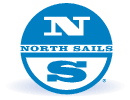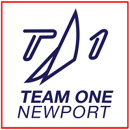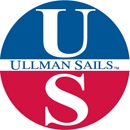
|
|
|
Scuttlebutt News: Tucker Thompson - America's Cup diary
Thompson is well known for his work with t2p.tv, a full service video production company that has been operating since 2000. t2p.tv has become the complete source for on air coverage of sailing. From major regattas throughout the US and Caribbean to sailing destinations, to the sailors, the boats and the sport, t2p.tv covers it all and provices the on-demand online broadcasts. The Versus team joined the event during the challenger's Louis Vuitton Finals and the America's Cup Match, with Thompson submitting reports to Scuttlebutt where he provided his unique behind-the-scenes perspective. Friday, July 6, 2007 A Savoring Moment The 32nd America’s Cup is over, and what a regatta it was! Who would have guessed after both of the last qualifying rounds of the Louis Vuitton Cup were one-sided blowouts that the Cup match itself would be the closest in America’s Cup history. It was truly unbelievable to watch. Right down to the last second of the last race sailing fans worldwide were kept guessing, and even the competitors themselves did not know who won until the Race Committee hoisted Alinghi’s blue flag. At its best that is how sailing should be, and that is how we have all hoped the America’s Cup would one day become. Now it has!
There were so many incredible moments from this America’s Cup that I will never forget, but the one that stands out above the rest was the one the sailing world will also never forget… Race 7 of the 32nd America’s Cup. On occasions like that when they say, “where were you when” I will always recall being right next to Team New Zealand when they started putting their jib up on the final downwind leg. The water was all churned up. Something wasn’t right, and it was New Zealand’s Ray Davies who we first heard in our headsets commenting on the change in the wind. In the next few moments, all hell broke loose for the sailors on the water and I went ballistic. The Versus show recorded it all, and from the minute the spinnaker pole blew off Alinghi’s mast until the winner of the 32nd America’s Cup was determined, I never took a breath! I don’t ever remember being so excited, and I hope those watching across the country felt the same way. That moment validated my own 25 years of sailing, seven years of covering races, and 156 years of America’s Cup history, as truly the very best sailors in the world won the Cup by only one second! The America’s Cup in Europe was a huge success, and being part of it was a huge achievement. The future of the event and its coverage can only get better. It always has. What keeps it alive is that the sailors, the media, and sailing fans the world over are inspired by the same passion that John Cox Stevens had over 150 years ago when he took AMERICA to England. He had an idea and a dream, and was willing to follow it despite any and all obstacles in the road. In that way, it is no surprise that the America’s Cup has endured longer than any other international sporting event in human history. The fuel that feeds the America’s Cup transcends sport and speaks to the very core of all human achievement. Every time that mug is hoisted high over the winner’s head, we are reminded that life is defined by, and history is made of spectacular moments! back to top Thursday, June 28, 2007 Game On The 32nd America’s Cup in Valencia has turned out to be one of the closest America’s Cups in history. Who would have thought after Alinghi wiped out Team New Zealand in 2003 and remained strong throughout all of the ACTs, Luna Rossa disposed of BMW Oracle, and the Kiwis demolished the Italians, that the final match would be such a close fight. Fortunately for the whole world, we are in for quite a treat!
Alinghi, considered by most to be the favorite, started out with a victory that surprised no one. Then team New Zealand replied with a strong performance in race two evening the score at one all. Many wondered of the Kiwi victory was a fluke as the Alinghi boat was reputed to be much faster. The Kiwis, however responded in race 3 with all guns blazing although it was far from an easy win. Alinghi got the jump on them at the start, but the Kiwis held true to their long term weather call and banked everything on the right side delivering. Eventually it paid off in spades as a huge right hand shift put New Zealand in a strong position early on. The Kiwis were able to maintain their lead until the leeward mark where a botched takedown and an almost man overboard enabled the Swiss to catch up and draw even on then next leg. Faced with another lead change the Kiwis fought hard to maintain the starboard tack advantage at the top of the final beat, but the Swiss proved their worth by slowly chipping away at the Kiwis until the final approach to the windward mark where a left hand shift enabled them to take the lead once again. The final run of race three will be under debate for ages, but the fact is that Alinghi sailed away from Team New Zealand enabling them to create their own destiny on the run to the finish. After one of the biggest splits of the regatta both boats gybed for the finish line with Alinghi on port and Team New Zealand on starboard. At the moment of truth the boats converged just a few lengths from the line, and with a left hand shift the Kiwis once again regained the lead when it mattered most – at the finish line! With more lead changes then any America’s Cup race in living history the third race set the stage for the forth race of the America’s Cup as Alinghi was out to draw even on the scoreboard. Thanks to the skill of Ed Baird at the start Alinghi got the jump on New Zealand off the line and converted a strong position to windward into a leading position from which the Kiwis could not recover. The result of the past four races has even the sailors guessing. New Zealand tactician Terry Hutchinson was quoted as saying, “I don’t know what to expect.” For the first time in the modern version of the event the America’s Cup is dead even. Although they may not have been there the local reaction in Valencia is similar to that of Newport in 1983. Even the cab drivers know how even the scoreboard is and how close the racing has become. Sailors at home can finally relate the America’s Cup because this event, like never before, is a true test of sailing skill, and only the team that performs best on the water will win. It is as it should be, but now one knows what will be. That is the beauty of this America’s Cup. The game is on! back to top Monday, June 18, 2007 Behind the Scenes “Forty seconds to you. What do you see out there?” “The lefty is definitely filling in and there’s more pressure on this side of the course. They are definitely lifting off of them,” I respond.
The cameraman holds up his fingers. 5,4,3… “Tucker it looks like things are changing out on the water. What do you see,” asks Craig. Here we go! Talking about sailing is easy for me. I love it, and this job couldn’t be any better. The America’s Cup is the greatest show in sailing, and I am sitting in the best seat in the house- right on the course literally a few hundred yards from the race boats! There are only four of us on the boat from Versus, and 26 others on shore. They too are all excited to be covering the America’s Cup here in Spain, but none of them will actually see any of the sailing! Yet, without them no one else across the US would see the sailing either. The effort that goes into producing this event live and the sheer complexity of it all is amazing! Viewers will enjoy a nice show on their TV screen without an inkling of the sheer chaos taking place just behind the scenes. Producing an edited show is hard enough, even though the story, footage, and timeline are already known. Covering one of the most complex sports in the world live on the spot with an entirely new crew who have never worked together - starting off cold in the Louis Vuitton Semi Finals - is monumental. What’s more, those of our crew who know sailing are new to TV, and those who know TV are new to sailing! To say it is organized chaos is an understatement, but for the most part the shows are going pretty well. People who enjoy the show will have no idea what a colossal effort is it to put all these pieces of a completely new puzzle together, live with no chance at a second take. The stress can approach overwhelming, but overcoming the challenge on the spot is where the true fun lies. At the close of each show we all know we’ve accomplished something. Personally, I truly enjoy the challenge. In my ear I can hear the show - Craig Hummer doing a great job as the conductor of an orchestra he has never seen before. The sounds from studio are constantly interrupted by the hectic chatter from the control room. They have got A LOT on just to put the images, graphics, and features up seamlessly on the screen while following the race, monitoring dozens of camera feeds, and listening to what we are saying. I try to block out most of the noise except for the updates from director John Wilson, “We’re coming back to you guys on the water. Standby.” Throughout all the production mayhem I am intently focused on what’s happening in the race. At any moment they will throw to me, and that’s when a lifetime of sailing, racing, and coaching - and almost a decade of commentating - are put to the test. Nerves tighten. I know the country is watching. But this moment is what I have been working towards my whole career. The racing is AWESOME, and I am absorbed by it. The nerves go away. My excitement builds. A pass has just occurred in the race. It’s a major upset. Wow! Here comes Craig’s throw. I am chomping at the bit. I am ready! “Down to you in 5,4,3…” Here we go! back to top Monday, June 4, 2007 It’s a Matter of Odds Can Luna Rossa’s James Spithill reverse the trend of losing to Team New Zealand which now stands at 0-3? If he asked BMW Oracle’s former helmsman, Chris Dickson, I am sure he wouldn’t like the answer. So why are we seeing these one-sided series? Like many other things, it comes down to a game of odds. The America’s Cup has changed a lot over recent decades.
“The sailors have gotten smarter than the racecourse!” BMW Oracle’s Gavin Brady recently told me. The patterns within given wind ranges are relatively known thanks to almost a decade of meteorological study in Valencia and weather geniuses on the racecourse updating the sailors with what they can expect throughout the race. The racecourse is also a known constant. Even the modes of the other boats are well known so that for a given series with a given competitor the boats can be optimized to capitalize on their strengths and take advantage of a competitor’s weaknesses. The opposition is doing the same. Even the skill level of the sailors is a constant among the top teams. “You’re going to have a hard time passing a good team, and they going to have a hard time passing you,” says Brady. The probability of a major crew error at this level is very small. Every match racing move and counter move has been analyzed and the probability of its outcome in different wind ranges is known before the afterguard makes the call. Computers know all the moves, and they know exactly where the other boat is and how it is performing to within millimeters. The software, for example, can tell the helmsman exactly how long they can live to windward of the opposition on their lee bow at a given distance and wind condition before they have to tack away. “We know we can live with clear air to leeward (downwind) and our bow just one foot ahead of the other boat all day. You won’t see a lot of passing unless the committee designs a new racecourse.” What does this mean for our Mr. Spithill? We won’t see a lot of passing unless the sailors start gambling, and that’s exactly how he and Torben Grael have been sailing until now, comfortable to go for the jugular in the pre-start and take fliers away from the opposition on the course even when ahead. Odds are they are not going to get ahead of Team New Zealand by keeping the game close and waiting for their moment to pounce. Terry Hutchinson and Dean Barker have proven they won’t allow that. With all the advancements in design and boat moding making the racing even and the probability of each decision being predetermined by the onboard computers most of the guesswork has been taken out of the game. Therefore, the focus has been shifted back to the one area of the course that still has the most number of unknown variables and an unknown outcome- the pre-start, and this is where James Spithill has always shined. So the probability of Luna Rossa getting back into this game and evening the match comes down to the man behind the wheel, and the odds are in Spithill’s favor if he starts to start as he’s always started. If he does the probability of our knowing who will win the Louis Vuitton Cup finals will go back to where it should be, completely unknown! back to top Wednesday, May 30, 2007 The Best Seat in the House It has been seven years since I have sailed on an AC boat. So when Terry Hutchinson offered me an unusual opportunity to sail with them as a guest aboard NZL 92 I jumped at the chance. All I can say on behalf of all those who may not have been aboard a modern America’s Cup Class boat in full race mode is “WOW!”
The day started with some sail testing. Sailing in a straight line is relatable, even on a Cup boat, although it is magnified like everything else on these mammoths to the highest degree. I was just settling in to what it used to be like on these boats when the pre-start practice started. With very little warning, and almost no discussion the team instinctively snapped into race mode as we bore off into the starting line, and then WOOSH! The G forces in the back of the boat are enough to throw one overboard, the water shoots over the transom like a fire hose, and in an instant we are into the dial up. “Open the Venturi drains will you Tucker,” asks Grant Dalton. I am already up to my ankles in water. By the time I lift my head up we are in full reverse. The boat is doing about 8 knots. No one talks except for a few choice words from Terry about the other boat’s position. We are head to wind in 18 to 20 knots with the sails completely luffing and everything slack. A normal sailboat holds still while the sails luff on center, but on a Cup boat the sails are so overpoweringly large that they throw the entire boat around as they luff. The headsail literally thunders as it snaps back and forth. The main flops aloft causing the boat to lurch like a bull underneath. The whole boat shakes and swaggers. The noise is tremendous. Yet this doesn’t seem to phase any of the crew at all. They are used to it. They are focused. They all know exactly what to do, when to do it, and what the next move is. For them it is another day at the office. We’ve been in reverse for about a minute when Dean Barker sees his moment. With no warning the jib backs, the main swings out and this 80-foot giant spins on a dime, missing Ben Ainslie’s transom by a few feet. The boat accelerates like nothing else afloat for its size. In two lengths we are doing 13.60 knots! It feels like a monorail train leaving the station, and sounds like that too. The boat doesn’t pound into the waves like most other boats. It simply slips through the water until you realize you are flying, and the main is only about half full. Instantly we are in control of the pre start, and I am still trying to remember how to balance on one of these beasts. “Watch you fingers, mate!” It is Grant again. “That always scares me,” he reflects. Just a few months prior one of his teammates all but lost a finger! “I have seen a few go including a thumb that landed in my pocket!” “Layline. 40 seconds to the (Committee) boat with a gybe,” yells Terry. If Dean heard him it doesn’t show, but he listens to everything. We are hundreds of yards away from the line with just over a minute to go, but no matter. We are doing over 14 knots! Dean throws the boat into another gybe. The transom slides expertly in front Ainslie’s bow missing it by just over a meter. They’ve done this before! “He’s hooked!” yells Dick Meacham who has crawled out to the edge of the transom. By the time I look over he’s back on the handles for the final wind up. “14, 13, 12,” someone yells. Barker takes a quick look at the other boat over his shoulder and puts the bow down. Like a rocket at ignition the gun sounds and we launch across the line. Handles are still spinning feverishly. We settle into the groove upwind for a moment when “Craaaack!” The immense loads in the runners and sheets are released as the boat bears away to do it all over again. I may not be racing in the America’s Cup, but I have a new respect for those who are as I watch from my comfortable vantage point aboard a powerboat just a few hundred yards away. Yet, even being that close cannot do justice to what is really going on inside these over tensioned carbon fiber shells. There are seventeen guys working flawlessly, in unison, pushing harder than anyone can truly imagine. There is an awe inspiring battle going on within these boats just to make them behave, and the result is a magnificent show being performed by the very best sailors in the world! back to top Tuesday, May 22, 2007 The Rest of the Best Since my arrival in Valencia I have been watching BMW Oracle in awe. They seemed to have it all: the most money, the best technology, the fastest boat, solid crew work, a great track record. By all accounts it seemed hard if not impossible see this team fail to make it to the finals of the Louis Vuitton Cup and event the America’s Cup. What went wrong?
According to the law of diminishing returns too much of a good thing can be detrimental. Therein lies their demise. BMW Oracle was right to believe that they had the best of the best, but their biggest asset was their biggest liability. Their overconfidence blinded them from accepting what eventually became obvious to the entire world on the water. All the money, all the technology, the best designers and sailors, and all the years of effort they have put into this campaign cannot compare to the simple fact that at the end of the day this contest is, at its purest a sailboat race, and BMW Oracle got out-sailed. For Chris Dickson I am sure it was a psychological compounding of errors that started out small but eventually led to his inability to accept the reality of the situation as they continued to falter. In true David and Goliath fashion the unbeatable was weakened and eventually beaten because of their very belief that they were unbeatable. Despite BMW Oracle’s untimely departure from the regatta their defeat is a compliment to the success of the event. In the end it truly is a test of the skill of the very best sailors and their ability on the water. For BMW Oracle it was a case of being too good. The minute you feel you are unbeatable is the very minute you should begin to respect those who may be coming up behind you! back to top Thursday, May 10, 2007 The Greatest Show On Earth Sailing needs the America’s Cup. There are those who do not like the event, and it is easy to criticize from their homes and offices about sometimes boring races, slow boats, exorbitant budgets, and giant egos. And these are the people who love sailing just as much as the rest of us. But most of us can only relate to what we know. So if it seems there is too much money being spent on carbon fiber giants being followed by frenzied media and captained by the super wealthy than it is fair to say that most will see much more personal reward on a good beat to windward aboard their own boat at home. That is fair enough, but I would hasten to bet that the America’s Cup critics are for the most part very likely to be those who have not had the pleasure of seeing this spectacle in all of its grandeur first hand. I had not seen it either.
And it is all there for you, the sailing fan with salt water in your blood. It is then that you realize that this is the greatest extension of why you sail and who you are in your soul that you could ever dream of. You feel like a kid in the biggest toy store ever imagined. And those toys, those over priced, over egoed, overblown goliaths have just left the dock, and the sails are going up, and they start to GO! There really is nothing like it, and you know you can relate to the feeling of settling in upwind with the boat in the groove in a fresh breeze, and they are doing it bigger and grander than you could ever imagine. You realize that you are directly connected to those guys on board. To see this event first hand, no matter what you think of the America’s Cup, sends chills down your spine, and you can’t help but be grateful that you share the same passion with all the teams, supporters, media, and sailing fans worldwide. The America’s Cup is the greatest event in all of sailing, and it is the very pinnacle of the greatest sport in your world. It reminds you why you sail and it only gets better and better! back to top |


















|



